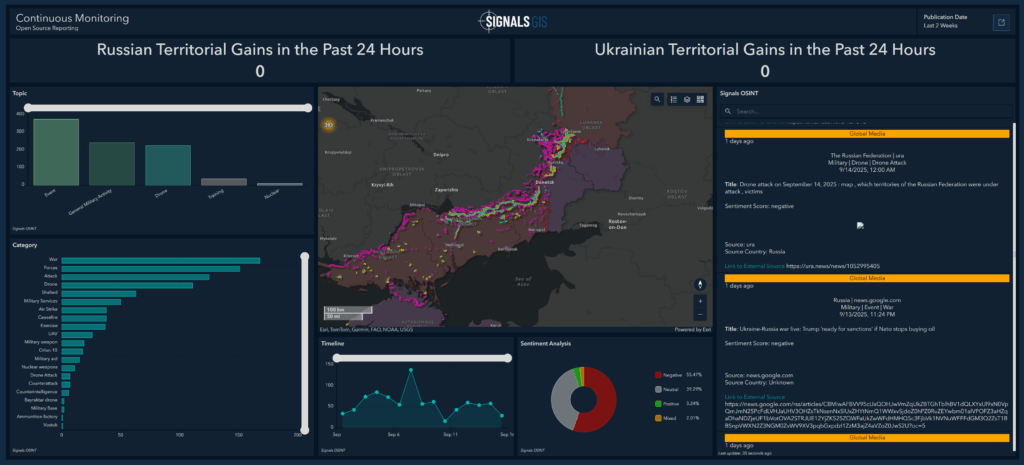The Russia-Ukraine conflict has been one of the most significant and closely watched wars of the past decade. Understanding its trajectory requires both a look back at how events have unfolded and continuous awareness of how the situation changes each day. This month’s Project Cognizance release combines those two perspectives, presenting a StoryMap and dashboard that together provide a layered view of the war’s evolution.
Oil refineries and other energy facilities have become deliberate targets, and the imagery included in the StoryMap shows the scale of damage at specific infrastructure sites, with context discussing how these strikes affect logistics and supply.
What the StoryMap Covers
- Territorial change – shifts in control from 2014 through 2025, including the full-scale invasion and subsequent counteroffensives
- Infrastructure as a weapon – strikes on refineries and energy facilities, with imagery and reporting to illustrate their impact
- Integrated reporting – maps and timelines combined with satellite imagery and open-source accounts
Continuous Monitoring Dashboard

Looking back helps set the stage, but what matters just as much is keeping pace with what’s happening right now. That’s where the continuous monitoring dashboard comes in. It’s designed to surface signals in near real time, making it easier to follow a conflict that changes by the hour.
The dashboard tracks:
- Reported territorial gains and contested areas over the past 24 hours
- Streams of open-source updates, scored for sentiment
- Topic filters that call out activity such as drone strikes, military movements, and counterattacks
- Trends over time, shown through reporting volume and activity charts
The value lies in the combination. Instead of a static snapshot, readers can see both the pace and direction of events, with the ability to drill into categories or cross-check reports as they emerge.
Recent Escalation: Polish Airspace Incident
On September 9–10, 2025, during a wave of Russian drone strikes on western Ukraine, at least 19 drones or aerial objects entered Polish airspace. Polish forces shot several down, becoming the first NATO member to engage Russian drones within its own airspace. Airports in Warsaw, Rzeszów, Lublin, and Modlin experienced temporary closures and restrictions, and a house in Wyryki-Wola (Lublin Voivodeship) was damaged when a drone crashed. Poland invoked NATO Article 4, requesting consultations with allies in response to the incursion.
Why Monitoring Matters
Incidents like this show how quickly the conflict can shift and spill across borders. Monitoring tools that combine territorial, infrastructure, and real-time reporting layers help put these developments in context, creating a clearer view of both past events and ongoing changes. A dashboard that integrates these perspectives creates a common operating picture, helping observers and decision-makers see not just where the conflict has been, but how it continues to unfold day by day.